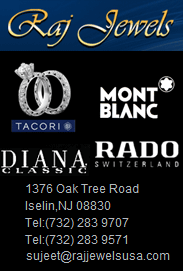|
|
|
|
|
|
Sydney is the most populous city in Australia, with a metropolitan area population of approximately 4.28 million (2006 estimate). It is the state capital of New South Wales, and the site of the first British colony in Australia, established in 1788 at Sydney Cove by Arthur Phillip, leader of the First Fleet from Britain. A resident of the city is referred to as a Sydneysider.
Sydney is situated on Australia's south-east coast. The city is built around Port Jackson, which includes Sydney Harbour, leading to the city's nickname, "the Harbour City". It is noted for the Sydney Opera House and the Harbour Bridge, and its beaches. The metropolitan area is surrounded by national parks, and contains many bays, rivers and inlets. It is listed as a beta world city by the Loughborough University group's 1999 inventory. The city has hosted international sporting, political and cultural events, including the 1938 British Empire Games, 2000 Summer Olympics and the 2003 Rugby World Cup. In September 2007, the city hosted the leaders of the 21 APEC economies for APEC Australia 2007, and in July 2008 hosted World Youth Day 2008. The main airport serving Sydney is Sydney Airport.
Sydney is one of the most multicultural cities in the world, which reflects its role as a major destination for immigrants to Australia.[5] According to the Mercer cost of living survey, Sydney is Australia’s most expensive city, and the 15th most expensive in the world.
Radiocarbon dating suggests that the Sydney region has been inhabited by indigenous Australians for at least 30,000 years. When the First Fleet arrived in 1788, 4000 to 8000 Aboriginal people lived in the region. The British called them "Eora", because being asked where they came from, these people would answer: "Eora", meaning in their language: "here", or "from this place". There were three language groups in the Sydney region, which were divided into dialects spoken by smaller clans. The principal languages were Darug (the Cadigal, original inhabitants of the City of Sydney, spoke a coastal dialect of Darug), Dharawal and Guringai. Each clan had a territory; the location of that territory determined the resources available. Although urbanization has destroyed most evidence of these settlements (such as shell middens), Sydney and its environs have rock drawings and carvings because of the nature of the rock, Hawkesbury sandstone.
Sydney is one of the most multicultural cities in the world, which reflects its role as a major destination for immigrants to Australia.[5] According to the Mercer cost of living survey, Sydney is Australia’s most expensive city, and the 15th most expensive in the world.
In 1770, British sea captain Lieutenant James Cook landed in Botany Bay on the Kurnell Peninsula. Under instruction from the British government, a convict settlement was founded by Arthur Phillip, who arrived at Botany Bay with a fleet of 11 ships on January 20, 1788. This site was soon found to be unsuitable for habitation, owing to poor soil and a lack of reliable fresh water. Phillip founded the colony, further up the coast, at Sydney Cove on Port Jackson on 26 January 1788. He named it after the British Home Secretary, Thomas Townshend, Lord Sydney, in recognition of Sydney's role in issuing the charter authorising Phillip to establish a colony.[citation needed] In April 1789 a disease, thought to be smallpox, killed an estimated 500 to 1000 Aboriginal people between Broken Bay and Botany Bays.[8] There was violent resistance to British settlement, notably by the warrior Pemulwuy in the area around Botany Bay, and conflicts were common in the area surrounding the Hawkesbury River. By 1820 there were only a few hundred Aborigines and Governor Macquarie had begun initiatives to 'civilize, Christianize and educate' the Aborigines by removing them from their clans
Sydney's central business district (CBD) extends southwards for about 3 kilometres (1.25 mi) from Sydney Cove, the point of the first European settlement in the area at the southern end of the bridge known as "The Rocks". Densely concentrated skyscrapers including Sydney Tower which is the city's tallest structure.[29] Other buildings including historic sandstone buildings such as the Sydney Town Hall and Queen Victoria Building are interspersed by several parks such as Wynyard and Hyde Park. The Sydney CBD is bounded on the east side by a chain of parkland that extends from Hyde Park through the Domain and Royal Botanic Gardens to Farm Cove on the harbour. The west side is bounded by Darling Harbour, a popular tourist and nightlife precinct while Central station marks the southern end of the CBD. George Street serves as the Sydney CBD's main north-south thoroughfare.
As the site of earliest European settlement in Australia, the CBD contains many other historic buildings such as the Sydney Mint, one of Australia's oldest buildings, Fort Denison, a penal site which was built in the colonial days on a small island situated on the harbour, as well as heritage listed buildings in The Rocks. The area also boasts well known modern architectural sites such as the Sydney Opera House and Martin Place.
|
|
|




|
|
|
|
|